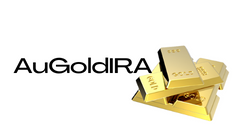In November, the U.S. Consumer Price Index (CPI), a principal measure of inflation, registered a modest rise of 0.1%, maintaining a consistent annual increase of 3.1%. This minor growth in prices reflects subtle economic shifts, with energy costs witnessing a marked reduction, in contrast to the gradual rise in expenses for housing and food.
Energy Prices Experience Significant Decline
The data released on Tuesday by the U.S. Bureau of Labor Statistics highlighted a significant 2.3% fall in energy prices. This decline, led by a 6% drop in gasoline and a 2.7% fall in fuel oil prices, played a pivotal role in moderating the overall inflation rates. The latest inflation figures had a subdued effect on Wall Street, as major stock indexes exhibited little fluctuation in early trading. Similarly, the cryptocurrency markets and precious metals sectors remained largely unaffected.
"The Consumer Price Index for All Urban Consumers (CPI-U) increased 0.1 percent in November on a seasonally adjusted basis, after being unchanged in October, the U.S. Bureau of Labor Statistics reported today," the inflation report notes. "Over the last 12 months, the all items index increased 3.1 percent before seasonal adjustment."
Federal Reserve Likely to Maintain Interest Rates
The Federal Reserve is likely to sustain its present interest rate stance, a decision significantly swayed by the recent CPI statistics. While some market forecasts indicate a pause in rate hikes, with potential reductions envisaged in the future, Fed analyst Jim Grant predicts persistently high rates, not foreseeing a reduction in the near term.
The Federal Open Market Committee (FOMC) is scheduled to convene on Dec. 13, 2023, with market anticipations currently not favoring a change in rates. There's a 98.4% probability that the federal funds rate will stay constant, with only a slim 1.6% likelihood of an increase on Wednesday, according to the CME Fedwatch tool.
What are your thoughts on the latest CPI report? Share your opinions in the comments section below.
CFTC
How To
How to hold physical gold in an IRA
An easy way to invest gold is to buy shares from gold-producing companies. But this investment method has many risks as there is no guarantee of survival. There is always the chance of them losing their money due to fluctuations of the gold price.
The alternative is to buy physical gold. This means that you will need to open an account at a bank, bullion seller online, or purchase gold from a trusted seller. This option is convenient because you can access your gold when it's low and doesn't require you to deal with stock brokers. It's also easier to see how much gold you've got stored. A receipt will be sent to you indicating exactly how much you paid. This will allow you to see if there were any tax omissions. You're also less susceptible to theft than investing with stocks.
There are however some disadvantages. You won't get the bank's interest rates or investment money. You won't have the ability to diversify your holdings; you will be stuck with what you purchased. Finally, the tax man might ask questions about where you've put your gold!
Visit BullionVault.com to find out more about gold buying in an IRA.
—————————————————————————————————————————————————————————————-
Based on [POSTTITLE]
by [POSTAUTHOR]
Related posts:
 October’s Inflation Report: Shelter Prices Up, Gasoline Plummets — Mixed Market Reactions Follow
October’s Inflation Report: Shelter Prices Up, Gasoline Plummets — Mixed Market Reactions Follow
 Bitcoin Mining: A Catalyst for Renewable Energy Growth and Flexible Load Systems
Bitcoin Mining: A Catalyst for Renewable Energy Growth and Flexible Load Systems
 Stablecoin Market Sees Growth in October Despite Mixed Supply Dynamics
Stablecoin Market Sees Growth in October Despite Mixed Supply Dynamics
 Federal Reserve’s ‘Beige Book’ Reveals Bleak Economic Outlook, Experts Warn Central Banks Lack Saving Ability
Federal Reserve’s ‘Beige Book’ Reveals Bleak Economic Outlook, Experts Warn Central Banks Lack Saving Ability










